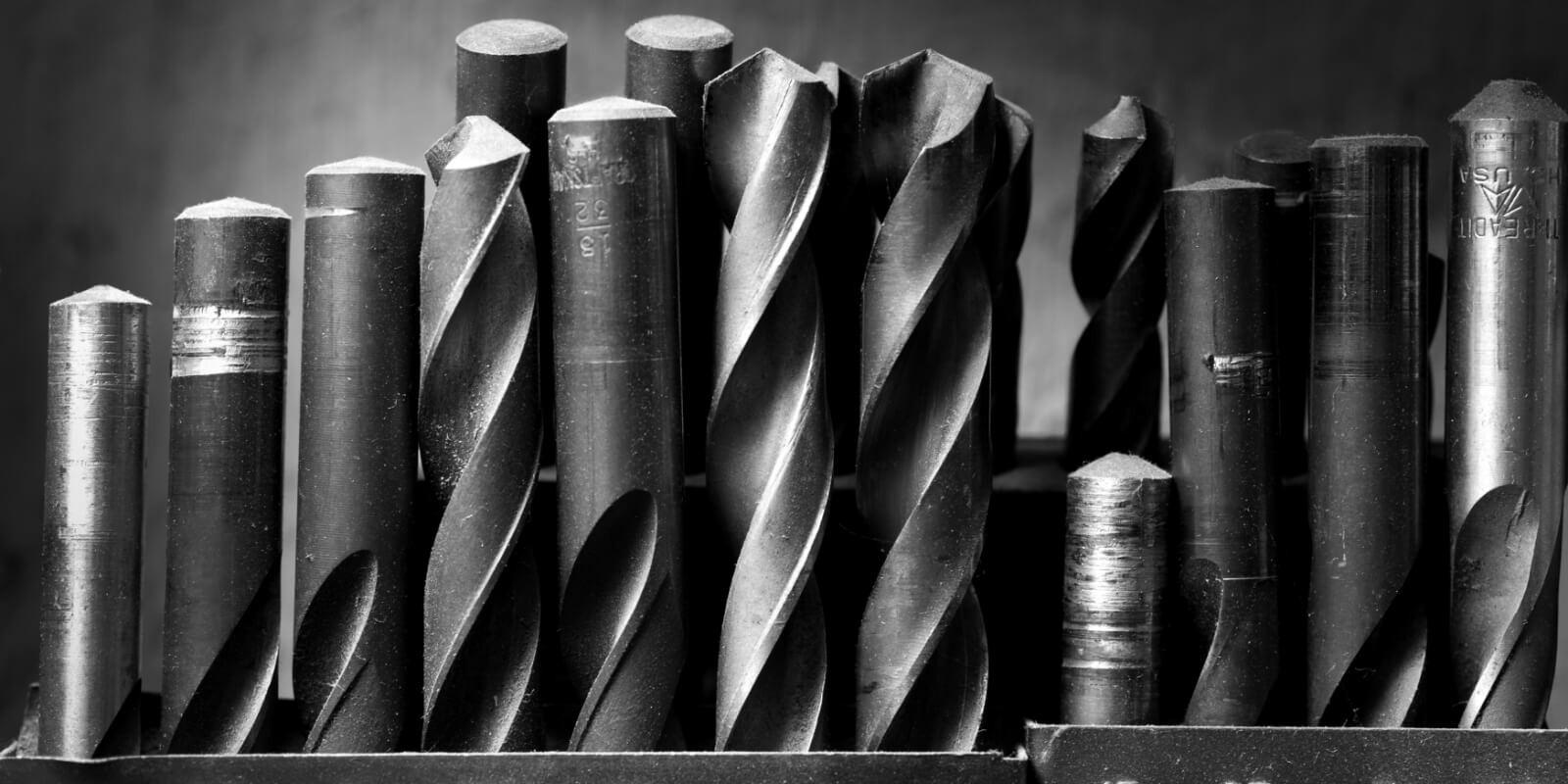Contents
- Importance Of Choosing The Right Drill Bit
- Types Of Drill Bits
- Factors To Consider When Selecting Drill Bits
- Material Compatibility
- Drill Bit Size And Shank
- Drill Bit Coatings And Surface Treatments
- Drill Bit Flute Design
- Purpose-Specific Features
- Maintenance And Care
- Frequently Asked Questions For Drill Bit Guide: Navigating Drill Bit Selection For Your Projects
- Conclusion
Choosing the right drill bit for your projects is crucial. In this drill bit guide, we will help you navigate through the different types of drill bits and their uses, ensuring you make the right selection for your specific needs.
Drilling holes in various materials is a common task in many projects, whether you are a professional contractor or a diy enthusiast. However, the success of these projects heavily relies on using the appropriate drill bit. With numerous options available, selecting the right drill bit can be a daunting task.
This comprehensive drill bit guide aims to simplify the selection process by providing valuable insights into the different types of drill bits and their applications. Whether you need to drill into wood, metal, concrete, or other materials, understanding the purpose, design, and features of various drill bits is essential for achieving precision and efficiency in your drilling tasks. So, let’s dive into the world of drill bits and learn how to choose the correct one for your projects.

Credit: www.amazon.com
Importance Of Choosing The Right Drill Bit
Choosing the right drill bit is of utmost importance for any project. It plays a crucial role in the efficiency and durability of the project. A wrong selection can lead to damage of materials and tools, resulting in additional costs and time.
By understanding the impact of drill bit selection, one can avoid these issues. It is essential to consider factors such as the material being drilled, the type of hole required, and the specific project requirements. Different drill bits are designed for specific purposes, such as wood, metal, masonry, or concrete.
By using the correct drill bit, you can ensure precise drilling, reduced effort, and improved results. So, take the time to navigate through the options and select the right drill bit for your projects.
Types Of Drill Bits
Drill bit selection for your projects can be made easier by understanding the different types available. High-speed steel (hss) bits are versatile and affordable, suitable for a range of materials. Cobalt bits, on the other hand, offer enhanced durability and can handle tough materials like stainless steel.
Carbide-tipped bits are known for their high precision and long lifespan. When working with concrete or brick, masonry bits are the ideal choice. Auger bits are designed for drilling large, deep holes in wood, while forstner bits are ideal for creating clean, flat-bottomed holes.
Each type of drill bit has its own advantages and knowing the right one for your specific project can make a significant difference in its success. Don’t forget to consider factors like material compatibility, hole size, and desired finish. Happy drilling!
Factors To Consider When Selecting Drill Bits
Selecting the right drill bits for your projects involves considering factors such as material compatibility, size, shank, coatings, surface treatments, flute design, and purpose-specific features. Material compatibility is crucial to ensure the drill bit can effectively drill through the intended materials.
Size and shank play a key role in determining the drilling depth and stability. Coatings and surface treatments enhance durability and performance. Flute design affects chip removal and drilling speed. Purpose-specific features cater to specialized drilling tasks, such as wood or metal drilling.
By carefully evaluating these factors, you can ensure that you have the appropriate drill bits for your projects, minimizing the risk of damage, improving efficiency, and achieving the desired results. So, take your time to navigate through the drill bit selection process for successful project completion.
Material Compatibility
Matching the right drill bit to the hardness of your material is crucial for efficient project completion. When working with wood, consider a bit designed for fast and clean drilling. Metal requires a bit with high heat resistance and durability.
Concrete demands a drill bit that can withstand the tough and abrasive nature of the material. For tile, opt for a bit specifically made for tile drilling to prevent cracking or damaging the surface. Plastics require a bit that can provide precise and controlled drilling.
Consider the material’s hardness and use a compatible drill bit to achieve optimal results. By selecting the appropriate drill bit for each material, you can ensure accurate and effective drilling without any compromises.
Drill Bit Size And Shank
Drill bit selection is crucial for successful project completion. Matching the right drill bit size to your project requirements is essential to ensure accuracy and efficiency. Understanding common drill bit sizes and their applications will help you make informed choices.
Different projects require different sizes, so it’s important to have a variety of options available. Another factor to consider is the impact of shank type on stability and precision. The shank type can affect the overall performance of the drill bit, so it’s important to choose the right one for your specific needs.
By navigating drill bit selection with these factors in mind, you can maximize the effectiveness of your drilling projects and achieve the desired results. So next time you embark on a project, don’t overlook the importance of drill bit size and shank type.
Drill Bit Coatings And Surface Treatments
Drill bit coatings and surface treatments, such as titanium and black oxide, offer significant benefits. Titanium coatings add durability and lubricity to drill bits, resulting in extended tool life and smoother drilling performance. The high hardness of titanium coatings enables them to withstand aggressive drilling conditions without wearing down.
On the other hand, black oxide coatings provide corrosion resistance and help reduce friction during drilling. They create a protective layer that prevents bits from rusting and enhances their overall lifespan. Apart from coatings, various surface treatments further enhance drill bit performance.
These treatments, such as heat treatment or carbide tipping, optimize durability, hardness, and cutting efficiency. By selecting the right coatings and surface treatments for your projects, you can enhance drilling precision, extend drill bit lifespan, and achieve more efficient and reliable results.
Drill Bit Flute Design
The design of drill bit flutes plays a crucial role in chip removal during drilling operations. Different flute types, such as spiral flutes, can significantly enhance drilling efficiency. These flutes are designed in a helical shape, allowing for smooth chip evacuation.
When drilling, it’s vital to consider the flute shape to prevent bit clogging, as a clogged bit can lead to decreased performance and even damage. With the right flute design, the chips can be effectively removed from the hole, ensuring accurate and efficient drilling.
So, when selecting drill bits for your projects, pay attention to the flute type and its impact on chip removal to achieve successful results.
Purpose-Specific Features
Specialty drill bits offer purpose-specific features, ensuring optimal performance for specific applications. These specialized bits cater to various needs, reducing the risk of damaging your project. On the other hand, multi-purpose bits are designed to provide versatility, accommodating different drilling tasks.
When it comes to countersinking, countersink bits are essential. These bits create a recess for screw heads, allowing them to sit flush with the surface. Additionally, spade bits are a popular choice for drilling large holes in wood. They provide smooth and fast cutting action.
Considering these factors and selecting the right drill bit is crucial for the success of your projects. Proper understanding of each bit’s purpose and features will ensure efficient and precise drilling, resulting in exceptional outcomes. So, choose wisely and enjoy the journey of navigating through the vast drill bit selection.
Maintenance And Care
Proper storage is crucial to prevent damage to your drill bits. Be sure to store them in a dry and clean environment, away from moisture and dust. Regular sharpening and honing are also essential to maintain their performance. After each use, clean the drill bits using a soft brush or cloth to remove any debris or residues.
This helps prevent rusting and ensures that the bits remain sharp. Handling the drill bits with care, avoiding dropping or mishandling them, will further prolong their lifespan. By implementing these maintenance and care practices, you can ensure that your drill bits are always ready for your projects.
Frequently Asked Questions For Drill Bit Guide: Navigating Drill Bit Selection For Your Projects
What Are The Different Types Of Drill Bits Commonly Used For Diy Projects?
There are several types of drill bits commonly used for diy projects, including twist bits, spade bits, hole saw bits, and masonry bits. Each type is designed for specific materials and applications, so it’s important to choose the right one for your project.
When Should I Use A Twist Bit Versus A Spade Bit?
Use a twist bit for general-purpose drilling in materials like wood and plastic. Spade bits are better for larger holes and rough cuts in wood. They have a flat blade that helps remove material quickly, making them ideal for drilling holes for plumbing pipes or electrical conduit.
What Is The Best Drill Bit For Drilling Through Concrete?
When drilling through concrete, it’s best to use a masonry bit. These bits have a carbide tip that is specifically designed for drilling into hard materials like concrete and brick. Be sure to use a hammer drill for added power and efficiency when drilling through tough materials.
Conclusion
Choosing the right drill bit for your projects can make all the difference in achieving the desired outcomes. By understanding the key factors such as material type, drilling speed, and the specific application, you can navigate the drill bit selection process with confidence.
Remember that different materials require different drill bit types, and using the wrong one can result in subpar results or even damage. Also, consider the drilling speed and the material’s hardness or density to ensure efficient and effective drilling. Additionally, be mindful of the specific application, as some projects may require specialized drill bits such as masonry or glass and tile bits.
Taking the time to research, plan, and select the appropriate drill bit will save you time, money, and effort in the long run. So, next time you embark on a drilling project, refer back to this drill bit guide to help you choose the perfect tool for the job.









